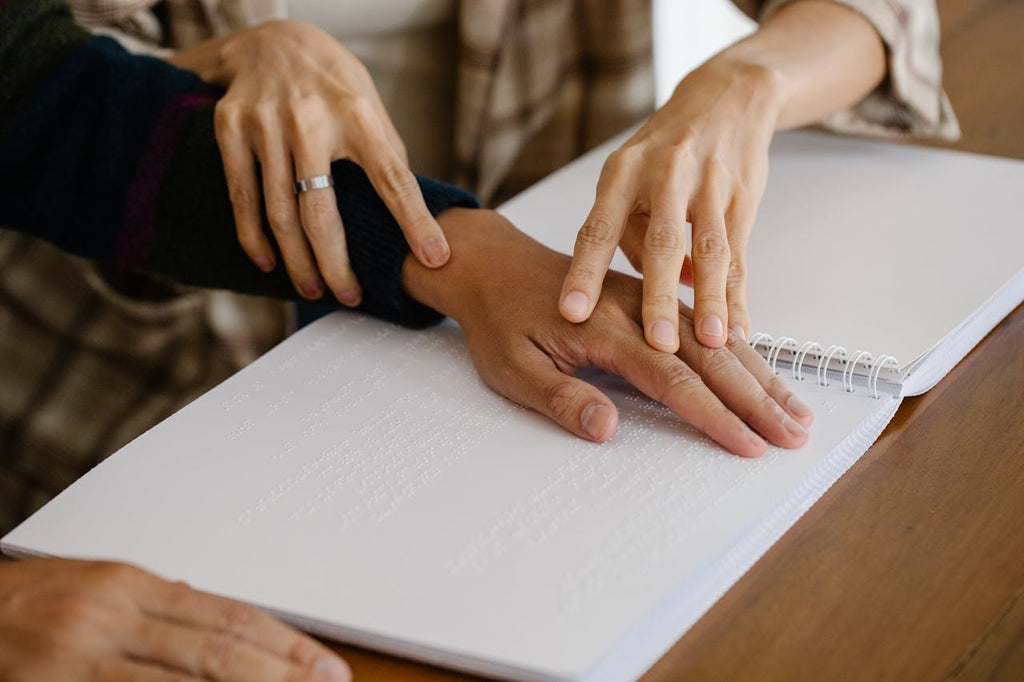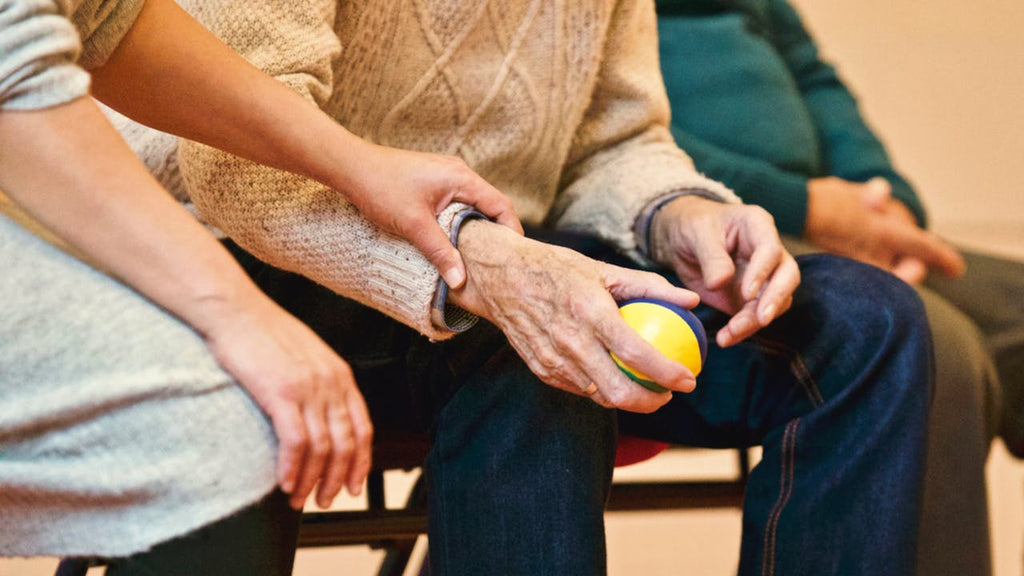As a caregiver, ensuring the safety and well-being of your loved ones or clients is paramount. For those caring for individuals with dementia, older adults, or working alone, the risk of falls is a significant concern.
Understanding the importance of fall prevention is the first step in providing effective care. Falls can result in serious injuries, decreased mobility, and a loss of independence for those under your care. These tips can help you create a safer environment for your loved ones or clients and reduce the risk of falls.

1. Create a Safe Environment
The environment plays a crucial role in fall prevention. Remove hazards such as loose rugs, clutter, and uneven surfaces that could cause tripping. Ensure that walkways are well-lit and free from obstacles, especially during the night.
Remove Hazards
Take proactive steps to identify and eliminate potential tripping hazards. Start by securing loose rugs or carpets that could easily slide underfoot. Clear away clutter from walkways, including items such as shoes, bags, or electrical cords.
Ensure Adequate Lighting
Poor lighting conditions can greatly increase the risk of falls, particularly during the night or in dimly lit areas. Ensure that all walkways, especially those frequently used, are well-lit to provide clear visibility.
2. Encourage Physical Activity
Regular exercise can improve strength, balance, and coordination, reducing the likelihood of falls. Encourage your loved ones or clients to engage in activities such as walking, gentle stretching, or tai chi, as recommended by their healthcare provider.
Incorporate Daily Walks
Encouraging regular walks can be an excellent way to promote physical activity while enjoying the outdoors. Start with short walks around the neighbourhood, gradually increasing the duration and intensity as fitness levels improve.
Introduce Gentle Exercise Programs
Explore gentle exercise programs tailored to the needs and abilities of your loved ones or clients. Activities such as gentle stretching, chair exercises, or tai chi can improve flexibility, balance, and coordination without putting excessive strain on joints or muscles.
3. Review Medications Regularly
Certain medications can increase the risk of falls due to side effects such as dizziness or drowsiness. Work closely with healthcare professionals to review medications regularly and discuss any concerns regarding their potential impact on fall risk.
Maintain an Updated Medication List
Keep a comprehensive list of all medications your loved ones or clients are currently taking, including prescription drugs, over-the-counter medications, and supplements. Note down the dosage, frequency, and any specific instructions provided by healthcare professionals.
Schedule Regular Medication Reviews
Work closely with healthcare professionals, such as doctors, pharmacists, or specialist nurses, to schedule regular medication reviews. During these reviews, discuss the potential side effects of medications, particularly those that may increase the risk of falls, such as medications that cause dizziness, drowsiness, or changes in blood pressure.

4. Provide Assistive Devices
Assistive devices such as walkers, canes, or grab bars can enhance safety and stability for individuals with mobility issues. Ensure these devices are properly fitted and regularly maintained to maximise their effectiveness.
Assess Individual Needs
Conduct a thorough assessment of your loved one's or client's mobility and specific needs to determine the most suitable assistive devices. Consider factors such as balance, strength, and gait pattern when selecting devices such as walkers, canes, or grab bars.
Ensure Proper Fitting and Maintenance
Once assistive devices have been selected, ensure they are properly fitted and adjusted to the individual's height and preferences. Improperly fitted devices can compromise effectiveness and increase the risk of falls. Regularly inspect assistive devices for signs of wear and tear, such as worn-out grips or loose screws, and promptly address any issues to maintain optimal functionality.
5. Promote Proper Footwear
Encourage your loved ones or clients to wear supportive footwear with non-slip soles, especially when walking indoors or outdoors. Avoid shoes with high heels or worn-out treads that could increase the risk of slipping.
Educate on Footwear Selection
Provide guidance and education to your loved ones or clients on selecting footwear that offers adequate support and traction. Emphasise the importance of choosing shoes with supportive features, such as cushioned insoles and firm heel counters, to provide stability and reduce pressure on the feet and ankles. Recommend footwear with non-slip soles that offer good traction on various surfaces, both indoors and outdoors.
Provide Access to Footwear Resources
Assist individuals in accessing resources that offer a variety of supportive footwear options suitable for their needs. Recommend speciality shoe stores or online retailers that offer a wide selection of supportive footwear designed for specific foot conditions or mobility issues.
6. Offer Supervision and Support
For those at high risk of falls, providing supervision and support during daily activities can help prevent accidents. Offer a steady hand when navigating stairs or uneven terrain and be attentive to signs of fatigue or discomfort.
Assist with Mobility Tasks
Offer assistance and support during mobility tasks, such as walking, transferring from one surface to another, or navigating stairs. Provide a steady hand or arm for support, especially when traversing uneven terrain or negotiating obstacles. Be attentive to the individual's pace and level of comfort, offering encouragement and reassurance as needed.
Monitor for Signs of Fatigue or Discomfort
Stay vigilant and observant for signs of fatigue, discomfort, or instability during daily activities. Be attentive to changes in posture, gait, or facial expressions that may indicate discomfort or pain. Encourage regular breaks and opportunities for rest, especially during prolonged periods of activity. Listen attentively to the individual's feedback and concerns, adjusting the level of assistance and support accordingly.
7. Stay Hydrated and Nourished
Dehydration and malnutrition can weaken the body and affect balance, increasing the risk of falls. Ensure that your loved ones or clients maintain adequate fluid intake and consume a balanced diet rich in nutrients essential for bone and muscle health.
Encourage Regular Fluid Intake
Remind your loved ones or clients to drink water regularly throughout the day to maintain adequate hydration. Offer fluids at regular intervals, especially during meals and snacks. Keep water easily accessible and within reach to encourage frequent sips.
Promote Balanced Nutrition
Encourage a balanced diet rich in nutrients essential for bone and muscle health, such as calcium, vitamin D, and protein. Include a variety of foods from all food groups, emphasizing fruits, vegetables, whole grains, lean proteins, and dairy or dairy alternatives. Offer nutrient-dense snacks such as nuts, seeds, yoghurt, or cheese to support energy levels and muscle function.

8. Install Safety Features
Incorporate safety features such as handrails, raised toilet seats, and shower chairs in the home to enhance accessibility and reduce fall risk. Consider installing grab bars near toilets, bathtubs, and stairways for added support.
Assess Home Environment
Conduct a thorough assessment of the home environment to identify areas where safety features are needed. Pay particular attention to high-risk areas such as bathrooms, stairs, and frequently used pathways. Consider factors such as existing mobility aids, balance issues, and common activities performed in each area.
Install Appropriate Safety Devices
Once safety needs have been identified, install appropriate safety devices to enhance accessibility and reduce fall risk. Examples of safety features include handrails, raised toilet seats, shower chairs, and grab bars. Install handrails along stairways and in hallways to provide stability and support during transitions. Place grab bars near toilets, bathtubs, and showers to assist with sitting, standing, and manoeuvring safely.
9. Encourage Regular Eye Exams
Vision impairment can contribute to falls, especially in older adults. Encourage regular eye exams to detect and address any vision changes that could affect balance or depth perception.
Educate on the Importance of Eye Health
Take the time to educate your loved ones or clients about the importance of maintaining good eye health and the role it plays in preventing falls. Explain how vision impairment, such as changes in visual acuity or depth perception, can increase the risk of accidents and falls. Emphasise that many age-related eye conditions, such as cataracts, glaucoma, and macular degeneration, can be detected and managed early through regular eye exams.
Facilitate Access to Eye Care Services
Assist individuals in scheduling and attending regular eye exams with qualified eye care professionals, such as optometrists or ophthalmologists. Help coordinate transportation to and from appointments, ensuring accessibility for individuals with mobility limitations or transportation barriers. Provide reminders and encouragement to follow through with scheduled appointments, emphasizing the importance of prioritizing eye health.
10. Stay Informed and Educated
Continuously educate yourself about fall prevention strategies and resources available in your community. Attend workshops, seminars, or online courses to stay updated on the latest techniques and best practices for ensuring the safety of those under your care.
Attend Workshops and Seminars
Seek out workshops, seminars, and conferences focused on fall prevention and caregiving. These events often feature expert speakers, interactive sessions, and practical demonstrations of effective fall prevention techniques. Attendees have the opportunity to learn from professionals in the field, exchange ideas with fellow caregivers, and gain valuable insights into the latest research and developments in fall prevention.
Engage in Online Courses and Resources
Explore online courses, educational materials, and resources specifically tailored to fall prevention and caregiving. Many reputable organizations and institutions offer free or low-cost online courses covering topics such as home safety assessments, mobility aids, and caregiver stress management. Take advantage of online resources such as articles, videos, and downloadable guides that provide practical tips and evidence-based information on fall prevention strategies.

Conclusion
As caregivers, our priority is to create a safe and supportive environment for our loved ones or clients. Remember, each individual is unique, so tailor your approach to meet their specific needs and circumstances. Together, we can work towards a future where falls are preventable, and everyone can age with dignity and independence.
Please contact us if you need assistance. Stay safe, stay protected.


